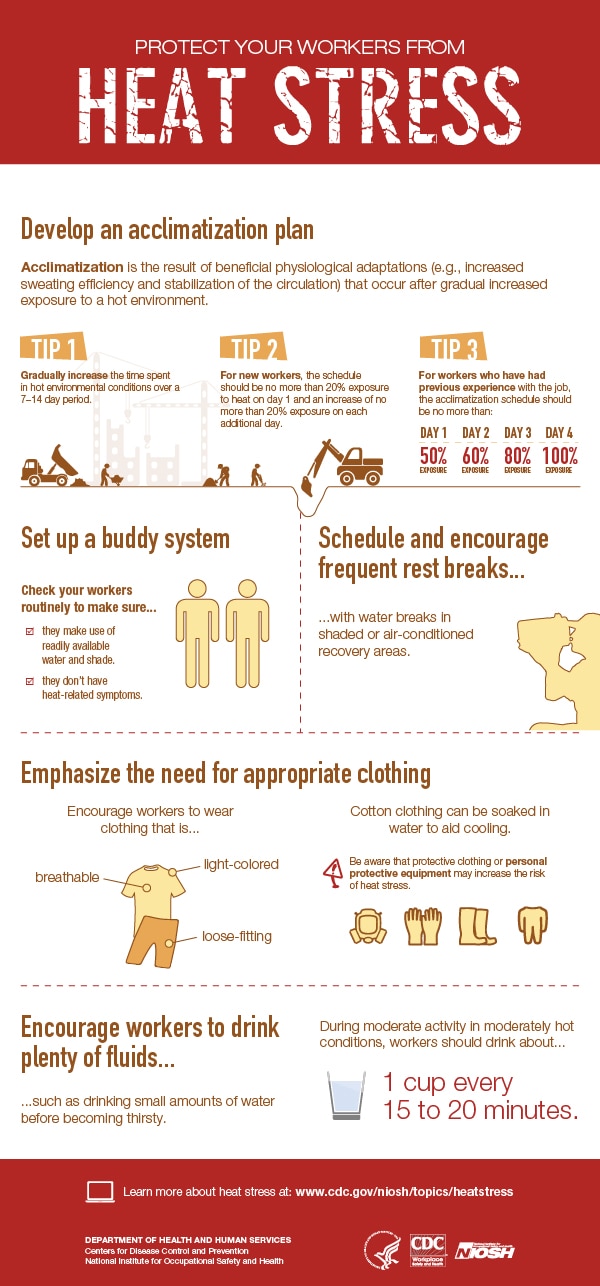Text equivalent
Protect your workers from heat stress
Develop an acclimatization plan
Acclimatization is the result of beneficial physiological adaptations (e.g., increased sweating efficiency and stabilization of the circulation) that occur after gradual increased exposure to a hot environment.
Tip 1
Gradually increase exposure time in hot environmental conditions over a 7–14 day period.
Tip 2
For new workers, the schedule should be no more than 20% exposure to heat on day 1 and an increase of no more than 20% exposure on each additional day.
Tip 3
For workers who had previous experience with the job, the acclimatization schedule should be no more than:
- 50% exposure on day 1
- 60% exposure on day 2
- 80% exposure on day 3
- 100% exposure on day 4
Set up a buddy system
Check your workers routinely to make sure...
- they make use of water and shade.
- they don't have heat-related symptoms
Schedule and encourage frequent rest breaks...
…with water breaks in shaded or air-conditioned recovery areas.
Emphasize the need for appropriate clothing
- Encourage workers to wear clothing that is breathable, light-colored, and loose-fitting.
- Cotton clothing can be soaked in water to aid cooling.
- Be aware that protective clothing or personal protective equipment may increase the risk of heat stress.
Encourage workers to drink plenty of fluids...
...such as drinking small amounts of water before becoming thirsty.
- During moderate activity in moderately hot conditions, workers should drink about 1 cup every 15 to 20 minutes.


